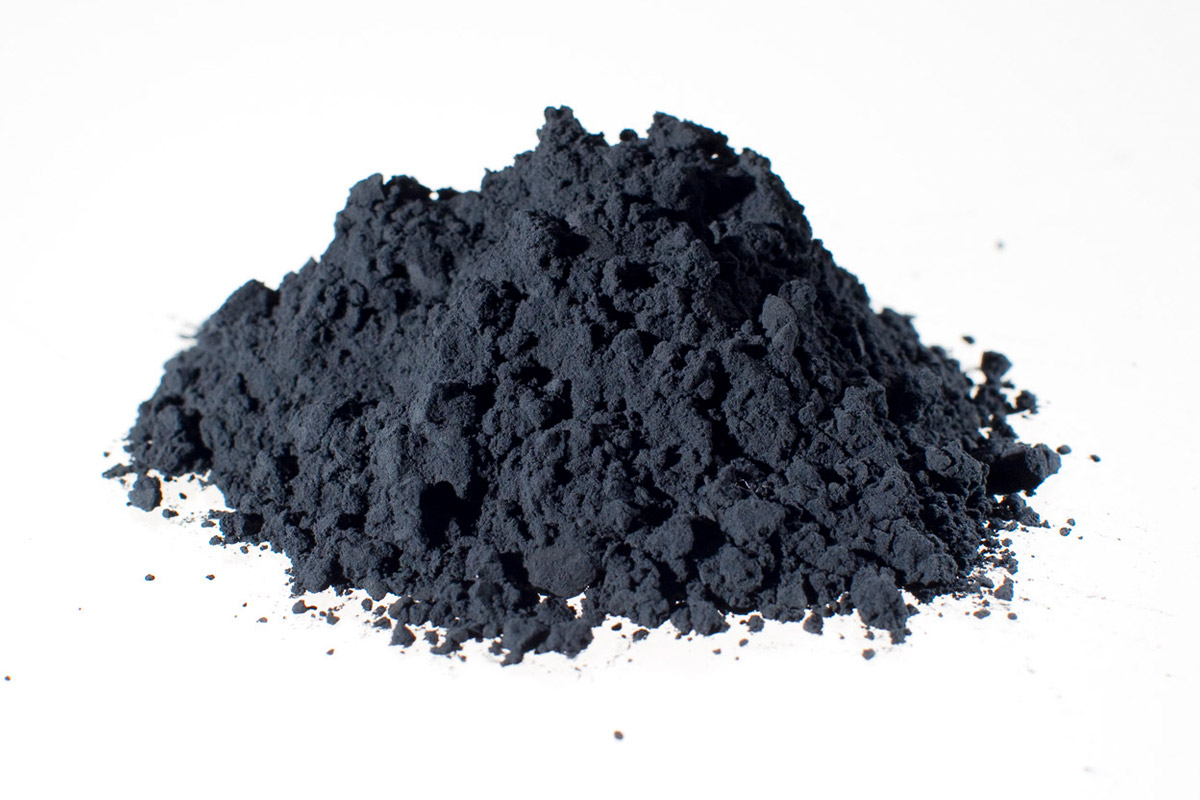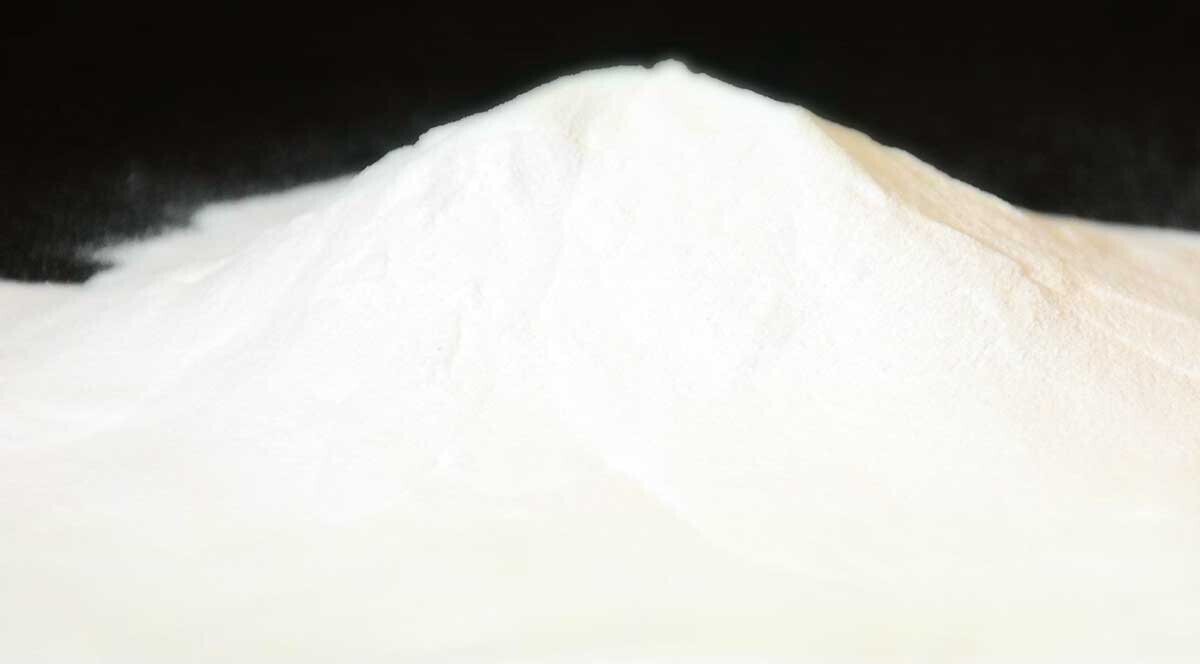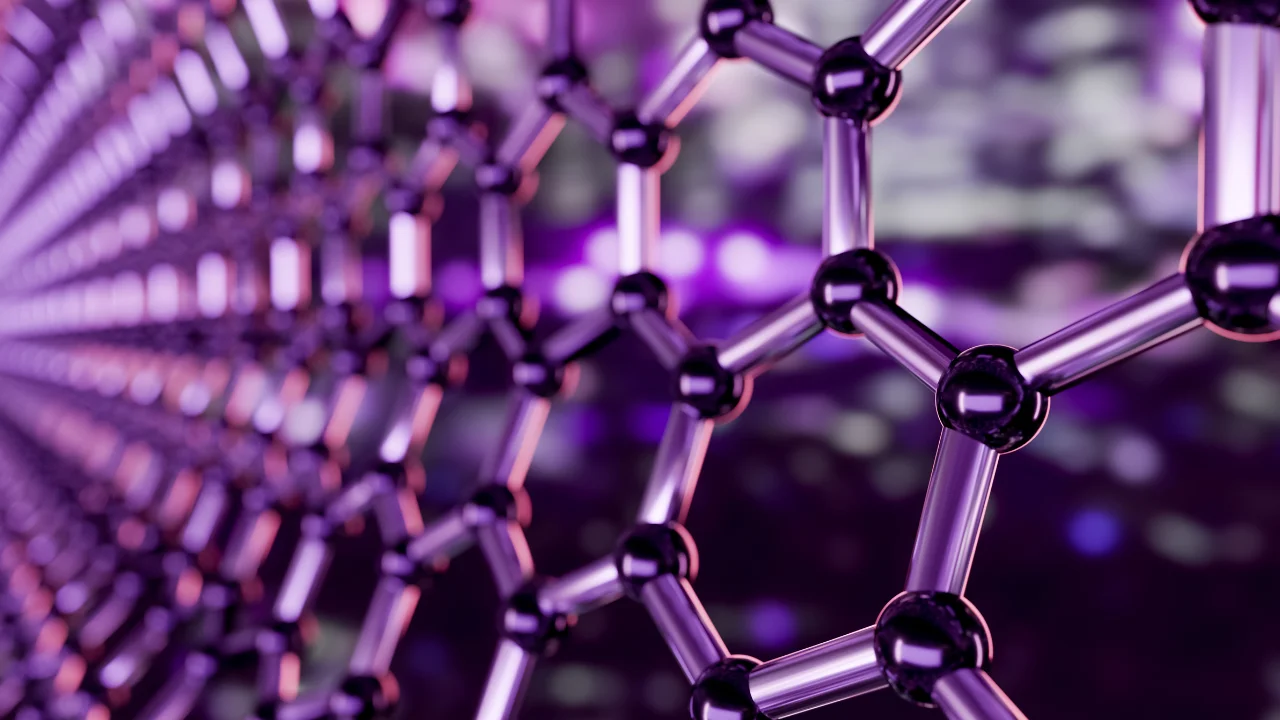Alumina, the "savior" of Cathode battery materials
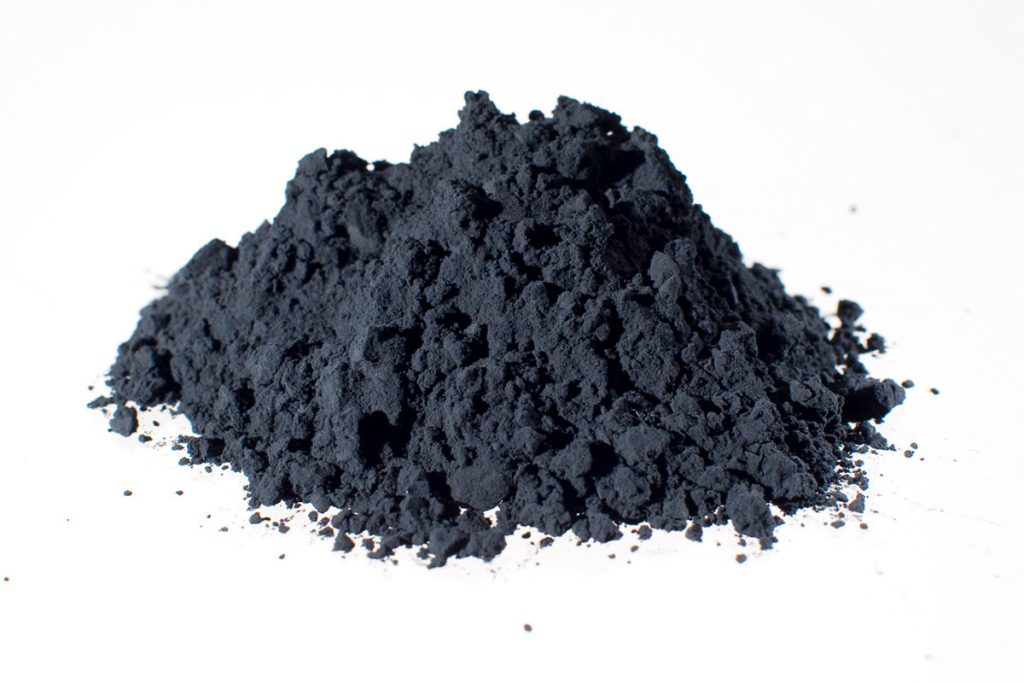
The basic structure of lithium-ion batteries covers positive electrode, negative electrode, electrolyte, separator and battery shell. The positive electrode material is the core material in lithium-ion batteries, which determines the energy density, voltage platform, cycle life and safety of the battery.
At present, although lithium cobalt oxide (LiCoO2), lithium manganese oxide (LiMn2O4), lithium iron phosphate (LiFePO4) and ternary materials (Li-Ni-Co-Mn-O) are four commercialized positive electrode materials for lithium-ion batteries, they have certain defects in safety, cycle performance, capacity retention and other aspects. In order to improve the stability of positive electrode materials, researchers use different modification methods, such as doping, surface coating and two methods in common.
How does alumina improve positive electrode performance?
Alumina coating on positive electrode materials can effectively improve the cycle stability, cycle life and thermal stability of positive electrode materials. The main effects of Al2O3 on positive electrode materials are:
(1) Hydrogen fluoride (HF) scavenger
LiPF6 is a commonly used electrolyte in electrolytes. Under high voltage, lithium hexafluorophosphate (LiPF6) will react with trace amounts of water to generate HF.
(2) Physical protection barrier
Coating a layer of Al2O3 on the surface of the positive electrode material can isolate the positive electrode material from the electrolyte and inhibit the occurrence of harmful side reactions between the positive electrode material and the electrolyte.
(3) Improving the thermal stability of positive electrode materials
Thermal stability is one of the key factors in evaluating the performance of lithium-ion batteries. During the charge and discharge process of lithium batteries, the release of lattice oxygen in the positive electrode material will cause the electrolyte to oxidize, thereby reducing its thermal stability.
(4) Improving the diffusion rate of lithium ions
Although aluminum oxide is not a good conductor of electrons and ions, it can react with residual lithium on the surface of the positive electrode material during the charge and discharge process to generate LiAlO2, which is a good conductor of ions and can increase the diffusion rate of lithium ions. This is mainly because LiAlO2 reduces the diffusion energy barrier of lithium ions.
(5) Reaction with LiPF6 to generate electrolyte additive LiPO2F2
The aluminum oxide coated on the surface of the positive electrode material can react with the lithium salt (LiPF6) in the electrolyte to generate lithium difluorophosphate (LiPO2F2), which is a stable electrolyte additive that can significantly improve the cycle stability, safety and rate performance of the positive electrode material.
(6) Inhibition of Jahn-Teller effect
The Jahn-Teller effect is the main cause of the dissolution of Mn ions in the positive electrode material, which may cause the collapse of the positive electrode material structure and hinder the diffusion of lithium ions, thereby causing the electrochemical performance of the positive electrode material to decrease.
Five major coating technologies
Impregnation method: Add the positive electrode material to the solution or sol containing the aluminum precursor to form a uniform slurry, and then dry and calcine to form an alumina-coated positive electrode material.
Precipitation method: Mix the positive electrode material and a solution such as aluminum nitrate or aluminum chloride evenly, adjust the pH value of the mixed solution to form a coating layer on the surface of the positive electrode material, and finally generate an alumina-coated positive electrode material by filtering, washing, drying and heat treatment.
Dry coating process: Alumina and positive electrode materials can be directly mixed to form a rough coating layer on the surface of the positive electrode material. Although uniform coating cannot be achieved on the surface of the positive electrode material, it still has a positive effect on the improvement of the electrochemical performance of the positive electrode material.
Sputtering method: The sputtering method uses Ar+ ions to bombard the target material (Al), so that Al atoms are sputtered and deposited on the surface of the positive electrode material.
Atomic layer deposition technology (ALD): Using trimethylaluminum and other materials as the aluminum source, aluminum oxide is coated on the surface of the positive electrode material. The thickness can be precisely controlled, and the increase in coating thickness is achieved by increasing the number of ALD cycles.
The quality of metal 3D printed parts depends on the powder

As raw material, the quality of metal powder determines the quality of the final product to a large extent. In general, the cleanliness, morphology and particle size distribution of the powder are the key factors that restrict the forming performance of the parts.
The morphology of the powder directly affects the bulk density and fluidity, which in turn affects the powder feeding and spreading process and the final performance of the parts. In powder bed fusion additive manufacturing, the powder spreading mechanism spreads the powder particles evenly in the forming area, and good fluidity is the key to obtaining a uniform and flat powder bed. Spherical and near-spherical powders have good fluidity, high bulk density, high density and uniform structure, and are the preferred raw material powders for powder bed fusion additive manufacturing.
However, if hollow powder and satellite powder exist in spherical and near-spherical powders, the final performance of the parts will be reduced. Hollow powder accounts for a higher proportion in powders with a particle size greater than 70µm, which will cause defects such as pores in the formed parts that are difficult to eliminate; satellite powder will reduce the fluidity of the powder and hinder the uniform accumulation of the powder during the spreading of continuous powder layers, thereby causing part defects. Therefore, metal powders for powder bed fusion additive manufacturing should minimize the proportion of hollow powder and satellite powder in the powder raw materials.
Powder particle size distribution is used to characterize the composition and changes of particles with different particle sizes in the powder particle system, and is an important parameter used to describe the characteristics of powder particles.
The particle size of the powder directly affects the powder spreading quality, forming speed, forming accuracy and organizational uniformity of the additive manufacturing process. For different processes, the selected powder particle size is different. Generally speaking, laser selective melting technology (SLM) selects powders with a particle size of 15~45µm, and electron beam selective melting technology (SEBM) selects powders with a particle size of 45~106µm.
From the perspective of thermodynamics and kinetics, the smaller the powder particles, the larger their specific surface area and the greater the sintering driving force, that is, small particles of powder are conducive to the forming of parts. However, powders with too fine particles will lead to reduced fluidity, loose density, and electrical conductivity of the powder, and the powder's formability will deteriorate, and spheroidization is prone to occur during the printing process. Too coarse powder particle size will reduce the powder's sintering activity, powder spreading uniformity, and forming accuracy.
Therefore, according to the performance requirements of the final parts, the coarse and fine powders are properly matched to improve the bulk density and fluidity of the powders, which is conducive to the powder bed fusion additive manufacturing. The researchers believe that under the general particle size range of the laser powder bed fusion additive manufacturing process, the use of a wider particle size distribution can increase the filling of small-sized particles into the gaps between large-sized particles and improve the powder bed density during the powder laying process.
From the current research status of the influence of changes in powder characteristics on forming quality, changes in powder size, morphology and surface state affect the powder spreading and forming quality of the powder. In terms of forming density, reasonable particle size distribution, higher sphericity and reduced cohesion between particles can improve the loose density and powder spreading quality of the powder, further reduce the number of pores and unfused defects in the forming specimen, and improve the forming density.
Modification - making nano-alumina more perfect
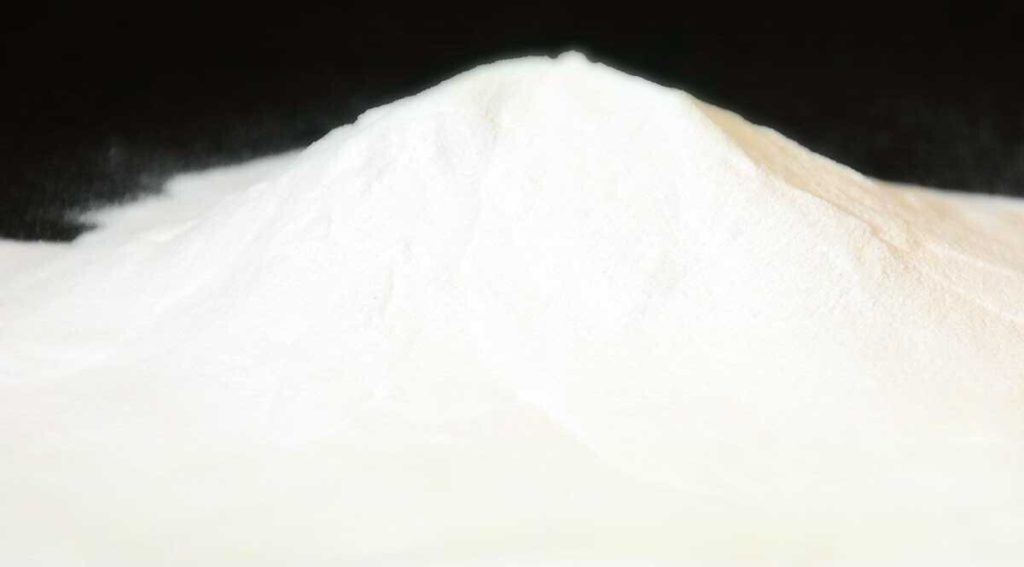
Nano-alumina is a new type of high-functional fine inorganic material. Since the nano-alumina powder was produced in the mid-1980s, people have been deepening their understanding of this high-tech material and have discovered many of its characteristics, such as high hardness, high strength, heat resistance, corrosion resistance and other excellent characteristics. Therefore, it is widely used in aerospace, national defense, chemical industry, microelectronics and other fields.
In the practical application of nano-alumina, the modification of powder has always been a very important work.
Why is it modified?
First of all, as a nanomaterial with many characteristics, nano-alumina is very easy to agglomerate due to its extremely small particle size and large surface energy. If the agglomeration phenomenon is particularly serious, it will have a great impact on the characteristics of nano-material alumina.
In addition, nano-alumina can be used as a biofilm for medical research on biological drugs, but the surface charge of the crystal with balanced surface charge is unevenly distributed due to the presence of lattice defects. The accumulation of surface charge defects and space charge areas at the micron level leads to a grid-like dipole moment. When biological materials contact the surface of such powders, enrichment will occur, resulting in pore blockage and membrane pollution.
Furthermore, the insulation and high strength of alumina are used as fillers in materials such as coatings and rubber to improve the hardness, insulation, ductility, and wear resistance of the materials. However, alumina is a polar substance and has poor compatibility with non-polar polymer materials.
Therefore, the surface modification of alumina has attracted much attention.
Surface modification refers to the surface treatment of solid particles by physical or chemical methods, that is, the process of purposefully changing the physical and chemical properties and surface morphology of the particle surface according to application needs. At present, there are two most practical modification methods. The first method is called surface organic modification because it mainly uses organic modifiers, and the second method is inorganic coating modification or surface coating modification.
Surface organic modification
The purpose of surface organic modification of ultrafine powder particles is to make the particle surface hydrophobic by linking the corresponding organic groups, thereby improving its dispersion performance and interfacial compatibility in organic matrices such as resins, rubbers, and paints, and thereby improving the product processing process and the comprehensive properties of composite material mechanics. According to the chemical structure type, modifiers are divided into higher fatty acids or their salts, lower fatty acids and coupling agents.
(1) Physical coating modification
Physical coating modification or coating treatment modification is a method of using organic matter (as long as it is a polymer, resin, surfactant, water-soluble or oil-soluble polymer compound and fatty acid soap, etc.) to coat the surface of particles to achieve the purpose of modification. It is a process for simply modifying the surface of particles.
(2) Surface chemical modification
Surface chemical modification is achieved by chemical reaction or chemical adsorption between the surface modifier and the particle surface. It is the most widely used modification method in production.
(3) Grafting modification
Grafting modification is a modification process in which monomer olefins or polyolefins are introduced into the surface of powder under certain external excitation conditions. Sometimes, it is necessary to excite the monomer olefin after the introduction to polymerize the monomer olefin attached to the surface.
Surface coating modification
Surface coating modification refers to the modification technology of uniformly coating the surface of ultrafine alumina powder particles with smaller solid particles or solid films, thereby changing the surface composition, structure, appearance and original function of the particles.
According to the environment and form of the coating reaction, the nature and method of the modified coating between particles, the surface coating modification methods can be divided into chemical precipitation method, hydrolysis coating method, sol-gel method, solvent evaporation method, mechanochemical method and gas phase method. Among them, the first three methods are all solution reaction methods, that is, the soluble salt solution is precipitated by precipitating agents and hydrolysis, and then coated on the surface of the particle powder to be modified.
What are the advantages of using excellent filler barium sulfate in nylon modification?
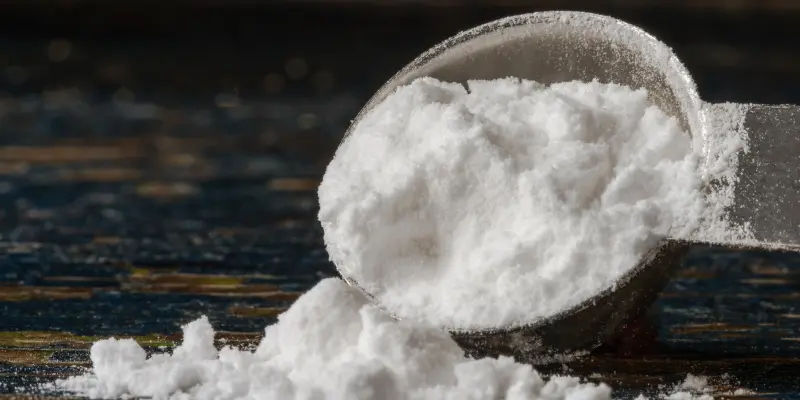
Barium Sulfate, also known as barite, is a colorless, odorless, non-toxic inorganic compound with the chemical formula BaSO4. It is known for its high density, high whiteness, good chemical stability and acid and alkali resistance, and is insoluble in water and most acids. These characteristics make barium sulfate widely used in many industrial fields, especially in the field of plastic modification, especially in the modification of nylon (PA), where barium sulfate shows unique advantages.
Nylon, as a polymer material with excellent mechanical properties, wear resistance, acid and alkali resistance and self-lubrication, is widely used in many industrial fields. However, the disadvantages of nylon such as high water absorption and poor dimensional stability limit its application range. Therefore, it is particularly important to modify nylon to improve its performance. As a neutral filler, barium sulfate plays multiple roles in nylon modification, such as strengthening, toughening and improving gloss.
Reinforcement effect
As an inorganic filler, the addition of barium sulfate can significantly improve the rigidity (modulus) and hardness of nylon, and is suitable for industrial parts that require high modulus (such as gears and bearings). Relevant experimental results show that with the increase of nano-barium sulfate content, the bending modulus and tensile modulus of nylon are improved. In particular, when the mass fraction of nano-barium sulfate is a certain value (such as 3%), the mechanical properties of nylon reach the best. This reinforcement effect is mainly due to the rigidity of barium sulfate and its good interface bonding with the nylon matrix.
Dimensional stability: reduce the shrinkage and warping of nylon during processing or use, and improve dimensional accuracy.
Heat deformation temperature (HDT): by limiting the movement of polymer chains, improve the thermal stability of materials, and expand the application of nylon in high temperature environments (such as automobile engine parts).
Toughening effect
In addition to the reinforcement effect, barium sulfate can also have a toughening effect on nylon. The interaction between nano-barium sulfate particles and the nylon matrix forms an elastic transition layer, which can effectively transmit and relax the stress on the interface, thereby absorbing and dispersing the external impact energy and improving the toughness of the material. However, it is worth noting that when the content of barium sulfate increases to a certain extent, the performance of the material will be reduced due to the occurrence of agglomeration.
Improved gloss
Barium sulfate has a strong light reflection ability in the ultraviolet and infrared wavelength ranges, which enables it to show high brightness in plastic coloring formulas. When barium sulfate of appropriate particle size is selected to be filled in nylon, the surface gloss of the processed products can be significantly improved. In addition, the refractive index of barium sulfate is similar to that of polymers such as nylon, so it can retain the brightness and hue of the coloring pigment.
Practical application
In practical applications, barium sulfate is usually uniformly dispersed into the nylon matrix in the form of nanometers by melt blending. This method utilizes the size effect, large specific surface area and strong interfacial force of nano-barium sulfate, and perfectly combines the rigidity, dimensional stability and thermal stability of barium sulfate with the toughness, processability and dielectric properties of nylon, thereby obtaining excellent comprehensive performance.
Barium sulfate has shown significant enhancement, toughening and gloss improvement in nylon modification. By rationally controlling the content and particle size distribution of barium sulfate, it is possible to optimize the mechanical properties of nylon, improve the durability and aesthetics of the product, balance performance and cost, optimize the formula design for specific scenarios, and thus broaden the application range of nylon.
What should we pay attention to when preparing high-quality silicon carbide single crystals?
![]()
The current methods for preparing silicon carbide single crystals mainly include: physical vapor transport (PVT), top seed solution growth (TSSG), and high temperature chemical vapor deposition (HT-CVD).
Among them, the PVT method has the advantages of simple equipment, easy operation control, low equipment price and operating cost, and has become the main method used in industrial production.
1. Silicon carbide powder doping technology
Doping an appropriate amount of Ce element in silicon carbide powder can achieve the effect of stable growth of 4H-SiC single crystal. Practice has proved that doping Ce element in powder can increase the growth rate of silicon carbide crystals and make the crystals grow faster; it can control the orientation of silicon carbide, making the crystal growth direction more single and more regular; inhibit the generation of impurities in the crystal, reduce the generation of defects, and make it easier to obtain single crystal crystals and high-quality crystals; it can inhibit the corrosion of the back of the crystal and increase the single crystal rate of the crystal.
2. Axial and radial temperature field gradient control technology
The axial temperature gradient mainly affects the crystal growth form and crystal growth efficiency. Too small temperature gradient will lead to the appearance of impurities during the crystal growth process, and will also affect the transport rate of gas phase substances, resulting in a decrease in the crystal growth rate. Appropriate axial and radial temperature gradients help the rapid growth of SiC crystals and maintain the stability of crystal quality.
3. Basal plane dislocation (BPD) control technology
The main reason for the formation of BPD defects is that the shear stress in the crystal exceeds the critical shear stress of the SiC crystal, resulting in the activation of the slip system. Because BPD is perpendicular to the crystal growth direction, it is mainly generated during the crystal growth process and the later crystal cooling process.
4. Gas phase component ratio adjustment control technology
In the crystal growth process, increasing the carbon-silicon ratio gas phase component ratio in the growth environment is an effective measure to achieve stable growth of a single crystal. Because a high carbon-silicon ratio can reduce large step aggregation and maintain the inheritance of growth information on the surface of the seed crystal, it can inhibit the generation of polymorphs.
5. Low stress control technology
During the crystal growth process, the presence of stress will cause the internal crystal plane of the SiC crystal to bend, resulting in poor crystal quality or even crystal cracking, and large stress will lead to an increase in the basal plane dislocation of the wafer. These defects will enter the epitaxial layer during the epitaxial process and seriously affect the performance of the later device.
Looking ahead, high-quality SiC single crystal preparation technology will develop in several directions:
Large-size
The preparation of large-size silicon carbide single crystals can improve production efficiency and reduce costs, while also meeting the needs of high-power devices.
High-quality
High-quality silicon carbide single crystals are the key to achieving high-performance devices. At present, although the quality of silicon carbide single crystals has been greatly improved, there are still some defects, such as micropipes, dislocations, and impurities. These defects will affect the performance and reliability of the device.
Low-cost
The preparation cost of silicon carbide single crystals is high, which limits their application in some fields. The preparation cost of silicon carbide single crystals can be reduced by optimizing the growth process, improving production efficiency, and reducing raw material costs.
Intelligent
With the development of technologies such as artificial intelligence and big data, silicon carbide crystal growth technology will gradually become intelligent. The growth process can be monitored and controlled in real time through sensors, automatic control systems and other equipment to improve the stability and controllability of the growth process. At the same time, big data analysis and other technologies can be used to analyze and optimize growth data to improve the quality and production efficiency of crystals.
The preparation technology of high-quality silicon carbide single crystals is one of the hot spots in current semiconductor material research. With the continuous advancement of science and technology, silicon carbide crystal growth technology will continue to develop and improve, providing a more solid foundation for the application of silicon carbide in high temperature, high frequency, high power and other fields.
How to balance the strength and cost of talc in plastic modification?
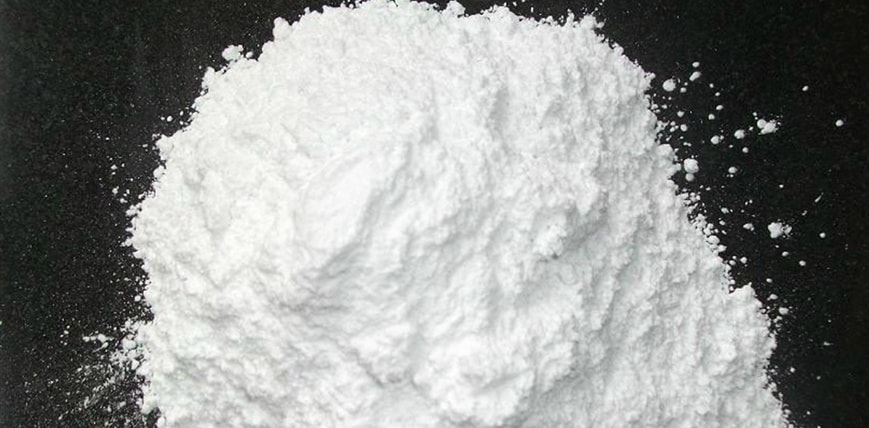
In today's plastics industry, modified plastics have attracted much attention for their excellent performance and wide application fields. Talc, as an important inorganic mineral filler, plays a vital role in plastic modification.
Talc can not only effectively improve the physical properties of plastic products, but also reduce their production costs to a certain extent. However, how to reasonably control costs while ensuring strength has become an important issue in plastic modification. When talcum powder is used in plastic modification, how can the relationship between flexural modulus, impact strength, etc. and cost be balanced by adjusting the amount of talcum powder added and its characteristics?
Talc is a natural magnesium silicate mineral with a flaky structure. In plastic modification, talc can significantly improve the rigidity, surface hardness, thermal creep resistance, electrical insulation and dimensional stability of plastic products. At the same time, it can also increase the impact strength of plastics and improve the fluidity and processing properties of plastics. This strengthening effect mainly comes from the micro-flaky structure of talc, which can form effective physical cross-linking points in the plastic matrix, thereby improving the overall performance of the plastic.
The bending modulus is an important indicator to measure the ability of plastics to resist bending deformation. Adding talcum powder to plastics can significantly improve the bending modulus. This is because the rigid structure of talcum powder can enhance the skeleton support capacity of plastics, making it less likely to bend and deform when subjected to external forces. However, it should be noted that as the amount of talcum powder added increases, the viscosity of the system will also increase, which may affect the processing performance of the plastic. Therefore, in practical applications, it is necessary to comprehensively consider the improvement of the bending modulus and the balance of processing performance.
Impact strength is an important indicator to measure the ability of plastics to resist impact loads. Adding an appropriate amount of talcum powder to plastics can improve the impact strength to a certain extent. However, when the amount of talcum powder added is too high, it may cause the gravitational binding force between plastic molecules to decrease, thereby affecting the impact strength. Therefore, while pursuing high strength, it is necessary to reasonably control the amount of talcum powder added to avoid a negative impact on the impact strength.
In plastic modification, the key to balancing strength and cost lies in the reasonable selection of talc varieties, particle size and addition amount. Here are some specific strategies:
1. Choose high-quality talc
High-quality talc has higher purity and more complete flake structure, which can more effectively improve the performance of plastics. Although the price of high-quality talc is relatively high, the performance improvement it brings can often offset the increase in cost and even bring higher added value.
2. Optimize the particle size distribution of talc
Appropriate particle size distribution can improve the uniformity of talc dispersion in the plastic matrix, thereby more effectively playing a reinforcing role. At the same time, reasonable particle size distribution can also reduce the viscosity of the system and improve processing performance.
3. Accurately control the addition amount
By accurately controlling the addition amount of talc, it is possible to ensure strength while avoiding negative impact on properties such as impact strength. In addition, a reasonable addition amount can also reduce production costs and improve economic benefits.
4. Use modified talc
Modified talc has stronger interface affinity and better dispersibility, which can more effectively improve the performance of plastics. Although the price of modified talc is relatively high, the performance improvement and processing performance improvement it brings can often offset the increase in cost.
14 methods of surface coating of ultrafine powder
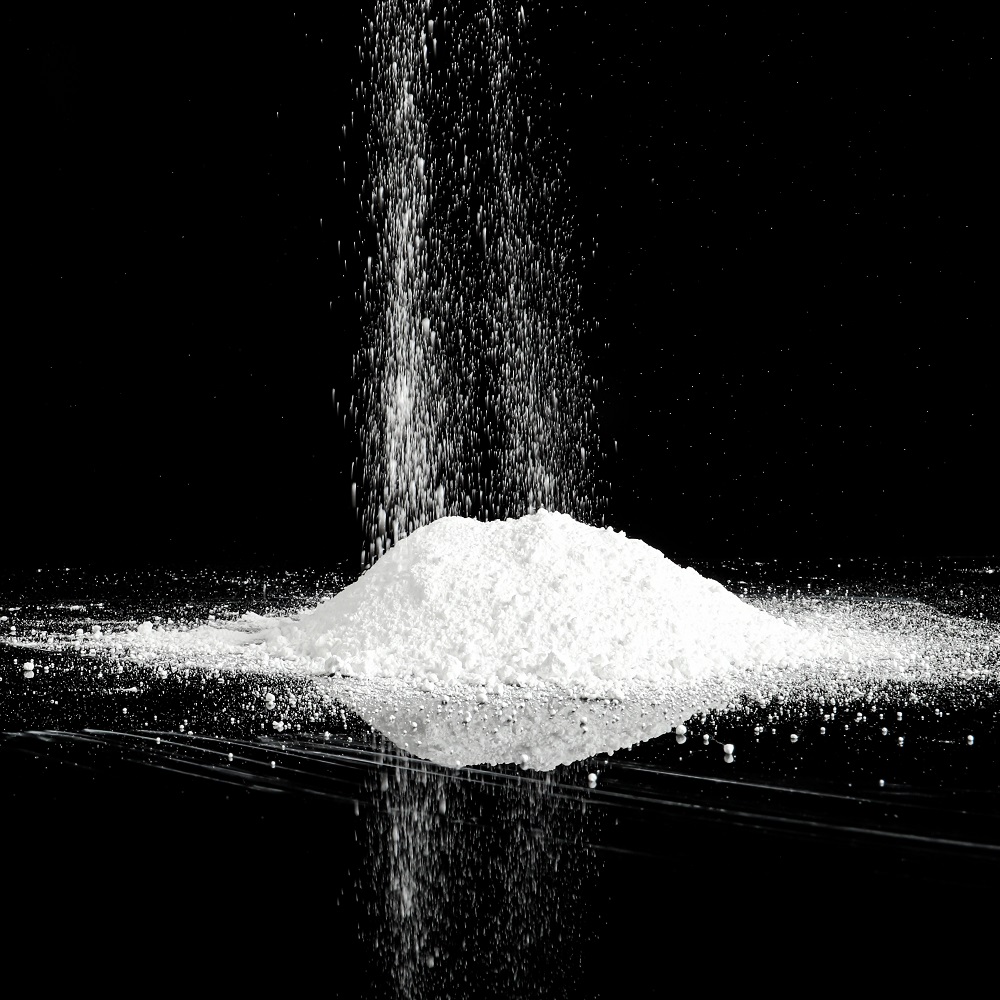
Ultrafine powders usually refer to particles with a particle size of micrometers or nanometers. Compared with bulk conventional materials, they have larger specific surface area, surface activity and higher surface energy, thus showing excellent optical, thermal, electrical, magnetic, catalytic and other properties. Ultrafine powders have been widely studied as a functional material in recent years and have been increasingly widely used in various fields of national economic development.
However, due to the unique agglomeration and dispersion problems of ultrafine powders, they have lost many excellent properties, which seriously restricts the industrial application of ultrafine powders.
Methods for coating the surface of ultrafine powders
1. Mechanical mixing method. Use mechanical forces such as extrusion, impact, shearing, and friction to evenly distribute the modifier on the outer surface of the powder particles, so that various components can penetrate and diffuse into each other to form a coating. The main methods currently used are ball grinding, stirring grinding, and high-speed airflow impact.
2. Solid-phase reaction method. Mix and grind several metal salts or metal oxides according to the formula, and then calcine them to directly obtain ultrafine coated powders through solid-phase reaction.
3. Hydrothermal method. In a closed system of high temperature and high pressure, water is used as a medium to obtain a special physical and chemical environment that cannot be obtained under normal pressure conditions, so that the reaction precursor is fully dissolved and reaches a certain degree of supersaturation, thereby forming a growth unit, and then nucleating and crystallizing to obtain a composite powder.
4. Sol-gel method. First, the modifier precursor is dissolved in water (or an organic solvent) to form a uniform solution, and the solute and the solvent are hydrolyzed or alcoholyzed to obtain a modifier (or its precursor) sol; then the pretreated coated particles are uniformly mixed with the sol to make the particles uniformly dispersed in the sol, and the sol is treated to be converted into a gel, and calcined at a high temperature to obtain a powder coated with a modifier on the surface, thereby achieving surface modification of the powder.
5. Precipitation method. Add a precipitant to a solution containing powder particles, or add a substance that can trigger the generation of a precipitant in the reaction system, so that the modified ions undergo a precipitation reaction and precipitate on the surface of the particles, thereby coating the particles.
6. Heterogeneous coagulation method (also known as "heteroflocculation method"). A method proposed based on the principle that particles with opposite charges on the surface can attract each other and coagulate.
7. Microemulsion coating method. First, the ultrafine powder to be coated is prepared by the tiny water core provided by the W/O (water-in-oil) type microemulsion, and then the powder is coated and modified by microemulsion polymerization.
8. Non-uniform nucleation method. According to the LAMER crystallization process theory, the coating layer is formed by the non-uniform nucleation and growth of the modifier particles on the coated particle matrix.
9. Chemical plating method. It refers to the process of metal precipitation by chemical method without applying external current. There are three methods: replacement method, contact plating method and reduction method.
10. Supercritical fluid method. It is a new technology still under research. In supercritical conditions, reducing the pressure can lead to supersaturation, and can achieve a high supersaturation rate, so that the solid solute crystallizes from the supercritical solution.
11. Chemical vapor deposition. At a relatively high temperature, the mixed gas interacts with the surface of the substrate, causing some components in the mixed gas to decompose and form a coating of metal or compound on the substrate.
12. High energy method. The method of coating nanoparticles using infrared, ultraviolet, gamma rays, corona discharge, plasma, etc. is collectively referred to as high energy method. The high energy method often uses some substances with active functional groups to achieve surface coating of nanoparticles under the action of high energy particles.
13. Spray thermal decomposition method. The process principle is to spray a mixed solution of several salts containing the required positive ions into a mist, send it into a reaction chamber heated to a set temperature, and generate fine composite powder particles through reaction.
14. Microencapsulation method. A surface modification method that covers a uniform film with a certain thickness on the surface of the powder. The particle size of the microcapsules usually prepared is 2 to 1000 μm, and the wall material thickness is 0.2 to 10 μm.
Ultrafine nickel powder: small size, big effect!
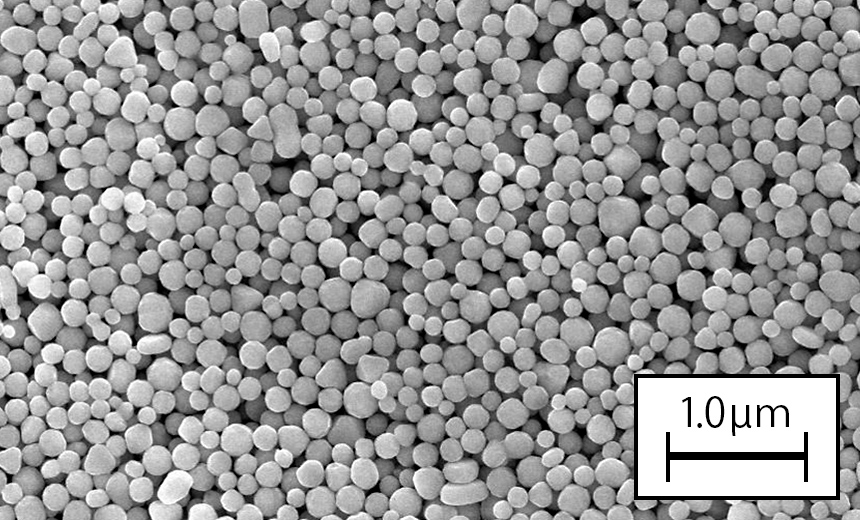
Ultrafine nickel powder generally refers to nickel with a particle size of less than 1μm. According to the particle size, ultrafine nickel powder is often divided into micron-grade nickel powder (average particle size ≥ 1μm), submicron-grade nickel powder (average particle size 0.1-1.0μm) and nano-grade nickel powder (average particle size 0.001-0.100μm). Ultrafine nickel powder has the characteristics of small size, high surface activity, good conductivity and excellent magnetic conductivity. It is widely used in cemented carbide, chip multilayer ceramic capacitors, magnetic materials, high-efficiency catalysts, conductive slurries, absorbing materials, electromagnetic shielding materials and other fields. Many fields have high requirements for the purity, dispersibility and sphericity of nickel powder, so the preparation of spherical ultrafine nickel powder with good sphericity, high purity and high dispersibility has become the current research focus in the preparation of nickel powder.
Ultrafine nickel powder is widely used in many high-tech and industrial fields due to its high specific surface area, excellent conductivity, catalytic activity and magnetic properties.
Electronics and semiconductor fields
Multilayer ceramic capacitors (MLCC): Ultrafine nickel powder is a key material for the internal electrodes of MLCC, replacing the traditional precious metal palladium/silver alloy, significantly reducing manufacturing costs, while meeting the needs of high-frequency and miniaturized electronic components.
Conductive paste and packaging: Due to its high conductivity and dispersibility, it is used in electronic pastes and printed circuit board (PCB) conductive coatings to improve the conductivity and heat dissipation performance of electronic devices.
Semiconductor materials: As a conductive filler in chip packaging, it enhances the thermal conductivity and mechanical stability of the material.
Energy storage and conversion
Lithium-ion batteries: As a positive electrode material (such as LiNiO2), it significantly improves the battery energy density and cycle life, especially for new energy vehicles and energy storage systems.
Fuel cells: Used as a catalyst (such as a hydrogen-oxygen reaction catalyst) to improve reaction efficiency, reduce the use of precious metal platinum, and reduce costs.
Supercapacitors: Enhance the charge storage capacity of electrode materials through nanostructure optimization.
Catalysis and environmental protection
Petrochemicals: used as an efficient catalyst in hydrogenation, dehydrogenation and other reactions to improve yield and product purity, such as toluene hydrogenation to produce methylcyclohexane.
Environmental protection: used for waste gas and wastewater treatment, catalytic degradation of pollutants, and reduction of harmful substance emissions.
New energy catalysis: in hydrogen energy production, efficient hydrogen production through steam reforming reaction (SMR) promotes the development of clean energy.
Magnetic materials and wave absorbing technology
Magnetic fluid and storage medium: dispersed in the carrier liquid to form magnetic fluid, or used in high-density magnetic storage devices (such as quantum disks).
Electromagnetic shielding and wave absorbing materials: ultrafine nickel powder has excellent electrical and magnetic properties. Electromagnetic wave shielding materials can be prepared by compounding ultrafine nickel powder with polymer matrix materials. Multi-component composite materials such as copper and nickel have good wave absorbing and shielding properties in the high-frequency region, and can be used as stealth materials in the high-frequency region. Based on ultrafine nickel powder conductive coating, it is widely used in military stealth technology and civilian electronic equipment.
Aerospace and high-end manufacturing
High-temperature alloys: As additives to improve the high temperature resistance and corrosion resistance of alloys, suitable for aircraft engine parts.
Cemented carbide: Replace cobalt as a bonding metal, used in cutting tools and wear-resistant parts, reducing costs and improving performance.
Biomedicine and new materials
Drug carriers and diagnosis and treatment: Utilize its magnetic responsiveness and biocompatibility for targeted drug delivery and magnetic marker detection.
3D printing and composite materials: As a filler for metal injection molding (MIM), it improves the mechanical properties and molding accuracy of complex parts.
The advantage of ultrafine nickel powder is that it replaces more expensive precious metal materials, greatly reducing production costs. However, these application fields require the nano nickel powder used to have regular spherical structure, small size and uniform particle size distribution, good dispersibility, high tap density, strong antioxidant ability and other properties, which also poses a challenge to the preparation process of nano nickel powder.
Advantages of carbon materials in thermal conductivity and heat dissipation
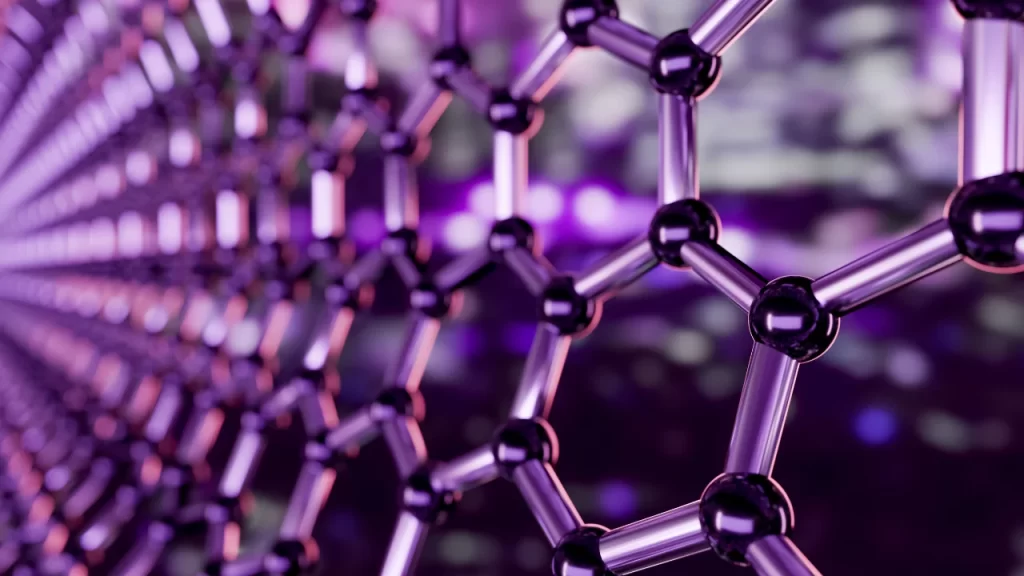
In the current electronics and optoelectronics industries, as electronic devices and their products develop towards high integration and high computing, the dissipated power has doubled. Heat dissipation has gradually become a key factor restricting the sustainable development of the electronics industry. Finding heat management materials with excellent thermal conductivity is crucial for the next generation of integrated circuits and three-dimensional electronic product designs.
The thermal conductivity of traditional ceramic materials (such as boron nitride, aluminum nitride) and metal materials (such as copper, aluminum) is only a few hundred W/(m·K) at most. In comparison, the thermal conductivity of carbon materials such as diamond, graphite, graphene, carbon nanotubes, and carbon fiber is even more amazing. For example, graphite has a theoretical thermal conductivity of up to 4180W/mk in the direction parallel to the crystal layer, which is almost 10 times that of traditional metal materials such as copper, silver, and aluminum. In addition, carbon materials also have excellent properties such as low density, low thermal expansion coefficient, and good high-temperature mechanical properties.
Graphene
Graphene is a single-layer carbon atom surface material peeled off from graphite. It has a honeycomb-shaped two-dimensional plane structure composed of single-layer carbon atoms tightly arranged in regular hexagons. The structure is very stable. The connection between carbon atoms inside graphene is very flexible. When external force is applied to graphene, the carbon atom surface will bend and deform, so that the carbon atoms do not have to rearrange to adapt to the external force, thereby maintaining structural stability. This stable lattice structure gives graphene excellent thermal conductivity.
Carbon nanotubes
Since the discovery of carbon nanotubes in 1991, it has been a focus, attracting many scientists to study the thermal conductivity of carbon nanotubes. Carbon nanotubes are made of single-layer or multi-layer graphite sheets curled up, and are divided into three types: single-walled, double-walled and multi-walled.
The special structure gives carbon nanotubes extremely high thermal conductivity. Some researchers have calculated that the thermal conductivity of single-walled carbon nanotubes at room temperature is 3980 W/(m·K), the thermal conductivity of double-walled carbon nanotubes is 3580 W/(m·K), and the thermal conductivity of multi-walled carbon nanotubes is 2860 W/(m·K).
Diamond
The crystal structure of diamond is a close arrangement of carbon atoms in tetrahedrons, and all electrons participate in bonding. Therefore, its room temperature thermal conductivity is as high as 2000~2100 W/(m·K), which is one of the materials with the best thermal conductivity in nature. This feature makes it irreplaceable in the field of high-end heat dissipation.
Carbon fiber
Carbon fiber is treated by high-temperature carbonization to form a turbostratic graphite structure. If its axial graphite lattice is highly oriented, it can achieve ultra-high thermal conductivity. For example, the thermal conductivity of mesophase pitch-based carbon fiber is 1100 W/(m·K), and the thermal conductivity of vapor-grown carbon fiber can reach 1950 W/(m·K).
Graphite
Graphite has a hexagonal crystal structure, consisting of six facets and two close-packed basal planes. The first layer of the hexagonal grid of carbon atoms is staggered by 1/2 of the hexagonal diagonal line and overlapped in parallel with the second layer. The third layer and the first layer are repeated in position, forming an ABAB... sequence. The thermal conductivity of natural graphite along the (002) crystal plane is 2200 W/(m·K), and the in-plane thermal conductivity of highly oriented pyrolytic graphite can also reach 2000 W/(m·K).
The above carbon materials all have extremely high thermal conductivity, so they have attracted much attention in the field of high heat dissipation requirements. Next, let's look at several classic carbon-based conductive/heat dissipating materials.
Carbon materials, with their unique crystal structure and physical and chemical properties, have demonstrated irreplaceable advantages in the field of thermal conductivity and heat dissipation. With the advancement of preparation technology and the expansion of application scenarios, carbon-based materials such as graphene and diamond are expected to promote heat dissipation solutions in industries such as electronics and aerospace to a higher level.
Application of powder preparation based on thermal plasma technology in thermal management materials
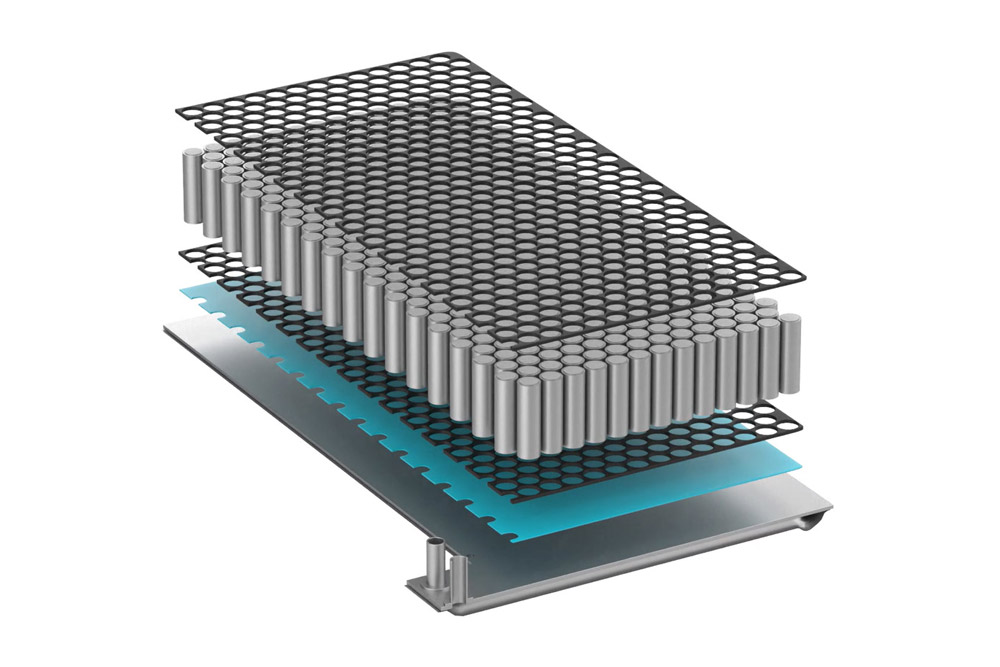
The miniaturization and integration of electronic devices put forward higher heat dissipation requirements for polymer-based thermal management materials. The development of new high thermal conductivity fillers to construct effective thermal conduction paths is the key to achieving high-performance thermal management materials.
Thermal plasma technology has great advantages in the preparation of nano- and micron-shaped spherical powders, such as spherical silicon powder and alumina powder, due to its high temperature, controllable reaction atmosphere, high energy density and low pollution.
Thermal plasma technology
Plasma is the fourth state of matter in addition to solid, liquid and gas. It is an overall electrically neutral aggregate composed of electrons, cations and neutral particles. According to the temperature of heavy particles in plasma, plasma can be divided into two categories: hot plasma and cold plasma.
The temperature of heavy ions in hot plasma can reach 3×103 to 3×104K, which basically reaches the local thermodynamic equilibrium state. In this state, the thermal plasma has the following relationship: electron temperature Te = plasma temperature Th = excitation temperature Tex = ionization reaction temperature Treac, so the thermal plasma has a uniform thermodynamic temperature.
Plasma preparation of spherical powders
Based on the characteristics of high temperature and fast cooling rate of high-frequency thermal plasma, physical vapor deposition technology is used to prepare nanopowders.
There are two main ways to prepare spherical powders with plasma.
One is to pass irregularly shaped and large-size raw material powders into the high-temperature arc of thermal plasma, and use the high-temperature environment generated by thermal plasma to quickly heat and melt the raw material particles (or melt the surface). Due to the surface tension, the melted powder forms a sphere and solidifies at a suitable cooling rate to obtain a spherical powder. The second is to use irregular powders or precursors as raw materials and thermal plasma as a high-temperature heat source. The raw materials react with the active particles therein and are rapidly cooled and deposited to generate ideal powder materials.
Taking advantage of the characteristics of high temperature, high energy, controllable atmosphere and no pollution of thermal plasma, high-purity, high-sphericity, and different-size spherical powders can be prepared by controlling the parameters in the preparation process such as feeding, cooling rate, and plasma power. Therefore, the use of plasma technology to prepare spherical powders has been increasingly widely used in energy, aerospace, chemical industry and other fields.

